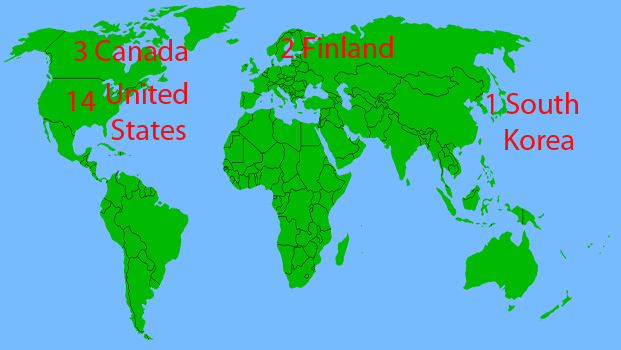It is appalling that in a nation where 37% of parents give their children’s local schools an “A” rating, the Programme for International Student Assessment (PISA) scores show that the US is 14th in reading out of all countries that are members of the Organization for Economic Co-operation and Development, 25th in math and 17th in science. Of all the 14,000 public school districts in America, only six percent have average math achievement scores to place them in the upper third of global performance. According to the Window on State Government, Texas ranks 46th in average math SAT scores and 49th in average verbal SAT scores. These disappointing findings show that secondary schools in the US need improvement, even in our own school district, which is only in the 59th percentile in math and 66th percentile in reading compared to schools across the globe according to globalreportcard.org, a site which ranks schools using average data from worldwide schools.
The Austin American Statesman article titled “Suburban School Districts Falling Behind” made the point that even the most affluent school districts in Texas are behind compared to other states, and more importantly, other nations. Oddly enough, according to the Times Higher Education, seven of the top ten world universities are located in the US, and the Academic Ranking of World Universities placed eight of the top ten universities in the US. This discrepancy between post-secondary rankings and high school rankings shows that the problem in education can be found most likely in high schools, where curriculum across the world begins to change.
“Back home in Germany we have a different style of education. We are graded based on our interaction with the teacher and in class more than on tests and homework. We don’t have any ‘fun’ classes, and we get to leave at lunch,” Lena Hackemann, an exchange student from Germany, said.
The problem is that reform in high schools across the board is virtually impossible without backlash and angry students and parents. However, there are some ideas proposed by other countries that if followed could boost student performance. Currently, the state of Texas is implementing the STAAR test, which was designed to fix the flaws of the former TAKS test. The TAKS test may have been responsible for some of the low educational scores because of its weak standards and teachers preparing curriculum to prepare only for the test—which covers only a basic knowledge of many subjects. If a student failed the test, he or she had to take remedial classes the next year but could still continue on to the next grade. This kind of safety net does not encourage growth or good study habits. Fortunately, the STAAR test, which seems to be modeled more similarly to other countries “gateway tests”—which require a student to either pass the test or repeat the course—will require students to retake the exam if they fail it and have a certain score to graduate. Hopefully with the new test and requirements, students in Texas can be more on par with other states. Massachusetts, which ranks in the top five of all state education systems, has a similar test which even offers several scholarships for high scores.
The funding allocated for educational programs is also an issue. More funds are set per-pupil for extracurricular activities rather than core classes. In addition, money spent on new construction and unused subscriptions and activities could be spent on finding high-quality teachers or advanced educational tools. Issues such as money have to pass through many laws and legislatures that can be subject to political conflict and protest.
One of the simplest and yet hardest to reform aspects of why education is lagging in the US is simply culture. More emphasis is placed on outside activities compared to other countries. In China, a leader in global education, it is against the law to hold a job under the age of 18. Approximately one-fifth of students under the age of 18 have held a job throughout high school according to the Bureau of Labor Statistics—a blend of beneficial responsibility and detrimental time-consumption. In addition, time spent on studying is much less on average compared to studying. The length of a technical school day in China is about the same as that in the US (with the exception of lunch), yet the average student may remain at their school for at least three hours more, studying. Many schools in China do not offer sports programs so that students can focus on their education. It is almost as if students have to choose between social activities and academic activities. The main issue within culture is the differences in pressure that students face. Beginning at age three, students across the world in many European and Asian countries are enrolled in competitive schools that teach students to focus on their studies. Parent pressure increases student performance and the social importance that getting into a good college has is different in other countries.
“I think our culture emphasizes different values than others. Sports get more attention than a really good professor at a university. People make fun of nerds rather than athletes, and because of our preference in what we do outside of school, there is a correlation to our grades,” junior Allison Carruthers said.
Perhaps we need to regain that spirit of advancement that made America first in the world before 1990. No matter what the cause of this decline is, one thing is for certain: unless schools find a suitable reform to improve education, other countries will continue to surpass us and take over our systems and jobs.














